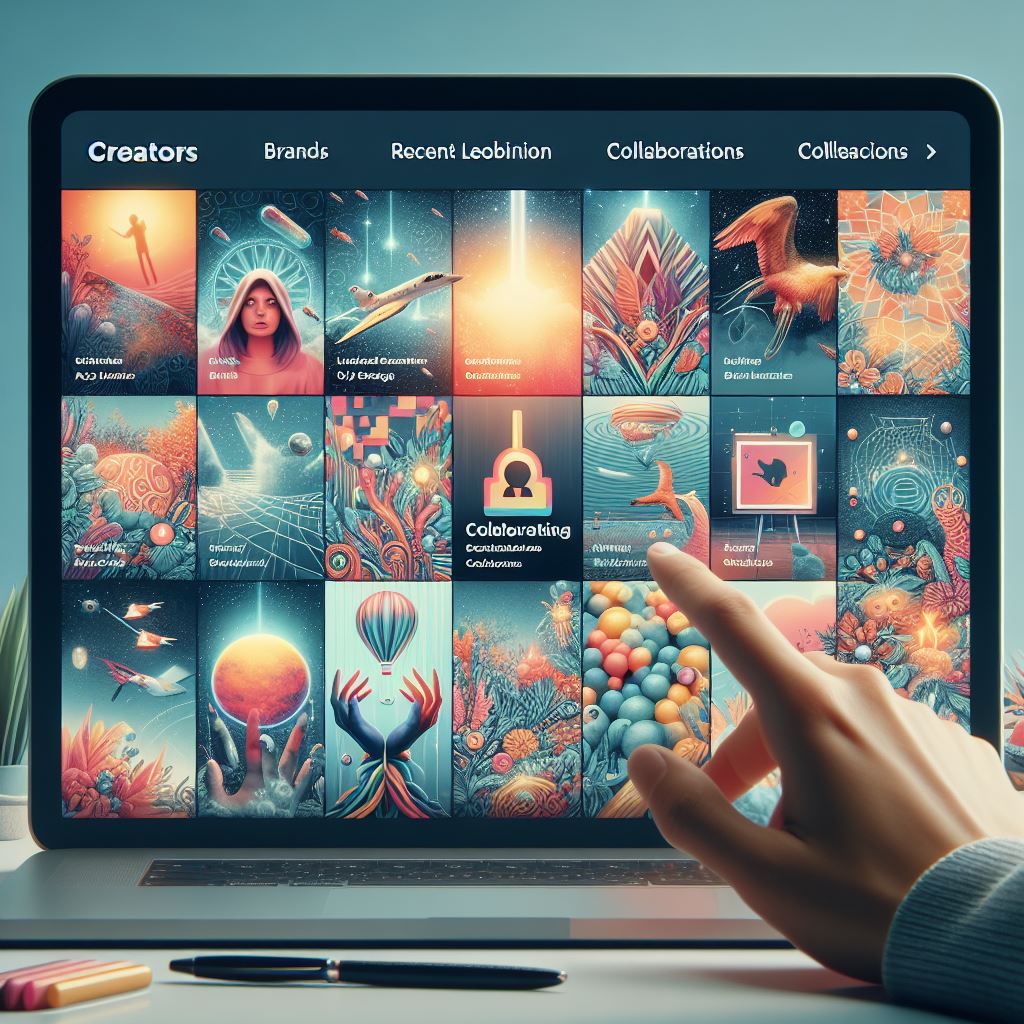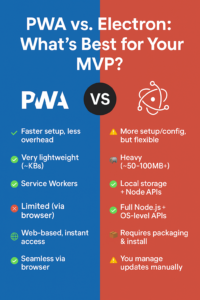Creator Economy and Video Trends: Understanding the Evolution from Creators to Cash
Introduction
Creator Economy and Video Trends is evolving at a rapid pace, driven largely by the emergence of the creator economy and its profound impact on social media platforms. From influencers to content creators, individuals are harnessing the power of social media to build communities, share their passions, and even generate substantial income. This paradigm shift has not only transformed how we consume content but has also opened up new avenues for entrepreneurship and creativity.
In this article, we’ll delve into the intricacies of the creator economy and explore the latest trends shaping social media video content. From the rise of short-form videos to the emergence of niche communities, we’ll dissect the forces driving this digital revolution. Additionally, we’ll examine the various monetization strategies available to creators, providing insights into how individuals can turn their passions into profitable ventures.
Join us as we navigate the dynamic landscape of the creator economy, uncovering the secrets behind its meteoric rise and exploring the opportunities it presents for both creators and consumers alike.
Examples of brand partnerships and collaborations for video editing software company:
Tutorial Series:
A YouTube creator specializing in filmmaking partners with a video editing software company to create a tutorial series showcasing advanced editing techniques using their software. The creator produces in-depth tutorials covering topics such as color grading, motion graphics, and special effects, demonstrating how to achieve professional-quality results with the software.
Feature Highlight Videos:
A tech influencer collaborates with a video editing software company to create feature highlight videos showcasing the latest updates and enhancements to the software. The influencer creates engaging content demonstrating new features, tools, and functionalities, providing viewers with an inside look at how the software can elevate their video editing workflow.
User Testimonials:
A group of content creators and filmmakers partner with a video editing software company to share their experiences and testimonials using the software. The creators create testimonial videos discussing how the software has improved their editing process, enhanced their creativity, and helped them achieve their artistic vision, providing valuable social proof and credibility for the brand.
Challenge Campaign:
A video editing software company launches a challenge campaign inviting creators to participate in a video editing contest using their software. Creators are encouraged to showcase their editing skills and creativity by creating videos based on specific themes or prompts, with the chance to win prizes, recognition, and exposure from the brand.
Educational Webinars:
A video editing software company partners with industry experts and educators to host educational webinars and workshops covering various aspects of video editing, post-production, and filmmaking. The webinars provide valuable insights, tips, and techniques for aspiring filmmakers and content creators, positioning the software as a valuable tool for professional-quality video production.
These examples demonstrate the diverse ways in which video editing software companies can collaborate with creators, influencers, and industry professionals to showcase their products, engage with their target audience, and establish themselves as leaders in the video editing industry. By leveraging the creativity and expertise of their partners, video editing software companies can effectively promote their software and attract new users while providing valuable educational resources and inspiration to the filmmaking community.
1. The Role of Social Media in the Creator Economy
Social media platforms have become the cornerstone of the creator economy, serving as the primary stage where individuals showcase their talents, share their stories, and connect with audiences on a global scale. Overall, billions of users actively engaging with content across platforms like
social media has democratized the process of content creation, allowing anyone with a smartphone and an internet connection to become a creator.
1.1. Key Drivers: accessibility and ease of use
One of the key drivers of the creator economy on social media is the accessibility and ease of use of these platforms. Unlike traditional media channels, which often require significant resources and infrastructure to produce and distribute content, social media platforms offer a level playing field where creators of all backgrounds can thrive. Whether it’s crafting compelling Instagram stories, filming entertaining TikTok videos, or live streaming on platforms like Twitch, creators have a plethora of tools at their disposal to express themselves and engage with their audience in real-time.
1.2. Creator Economy and Video Trends: vibrant communities with like-minded individuals
Moreover, social media platforms have evolved beyond mere content distribution channels to become vibrant communities where like-minded individuals can connect, collaborate, and support one another. From Facebook groups dedicated to niche interests to Discord servers where gamers converge, social media has fostered the creation of virtual spaces where individuals can find belonging and camaraderie.
1.3. Creator Economy and Video Trends: Brand Partnerships, Sponsored Content, and Affiliate Marketing
In addition to facilitating content creation and community building, social media platforms have also revolutionized the way creators monetize their content. Through features like
- brand partnerships,
- sponsored content, and
- affiliate marketing,
creators can leverage their influence and reach to generate revenue directly from their audience or through collaborations with brands. Platforms like
- Patreon (Creators – Fans: Nothing in-between), and
- OnlyFans (Used primarily by sex workers who produce pornography. Content on the platform is user-generated and monetized via monthly subscriptions, tips, and pay-per-view. Creators are paid 80% of these fees.)
have further expanded the monetization options available to creators, allowing them to offer exclusive content and experiences to their most dedicated fans in exchange for a subscription fee.
Overall, social media plays a central role in driving the creator economy, providing a fertile ground for individuals to express themselves, build communities, and monetize their passions. As the landscape continues to evolve, social media platforms will remain essential tools for creators looking to carve out their niche in the digital world.

2. Key Trends Shaping Social Media Video Content
Speaking of social media, video content is constantly evolving, driven by changing consumer preferences, technological advancements, and emerging cultural trends. In other words, understanding these key trends is essential for creators looking to stay ahead of the curve and produce content that resonates with their audience. Let’s explore some of the most significant trends shaping social media video content today:
2.1. Short-Form Video Dominance
Short-form video content, characterized by its brevity and digestible format, has surged in popularity across platforms like TikTok, Instagram Reels, and Snapchat Spotlight. As a result, attention spans dwindling and the demand for snackable content on the rise, creators are increasingly turning to short-form videos to capture their audience’s attention and drive engagement.
2.2. Creator Economy and Video Trends: Authenticity and Relatability
In an era of curated feeds and polished content, authenticity reigns supreme. Audiences crave genuine, relatable content that reflects the unfiltered realities of everyday life. As a result, creators who can authentically connect with their audience by sharing personal anecdotes, behind-the-scenes glimpses, and raw emotions are more likely to resonate and build lasting relationships with their followers.
2.3. Interactive and Immersive Experiences
Social media platforms are increasingly integrating interactive features like polls, quizzes, and augmented reality filters to enhance user engagement and create immersive experiences. Obviously, creators who leverage these interactive tools can foster greater audience participation and drive deeper connections with their content.
2.4. Creator Economy and Video Trends: Vertical Video Format
The rise of mobile-centric platforms like TikTok and Instagram has popularized the vertical video format, challenging the traditional landscape of horizontal video content. Vertical videos are optimized for viewing on smartphones, providing a seamless and immersive viewing experience for users scrolling through their feeds.
2.5. Niche Communities and Subcultures
Social media has facilitated the emergence of niche communities and subcultures centered around shared interests, hobbies, and identities. Creators who cater to specific niches within these communities can carve out a dedicated following and foster a sense of belonging among their audience.
By staying attuned to these key trends and adapting their content strategy accordingly, creators can effectively engage their audience, stay relevant in a rapidly evolving landscape, and ultimately thrive in the competitive world of social media video content.
3. Monetization Strategies for Creators
In the increasingly competitive landscape of the creator economy, diversifying revenue streams is essential for creators looking to monetize their content and turn their passion into profit. In other words, from traditional advertising models to innovative subscription-based platforms, there are various monetization strategies available to creators. Let’s explore some of the most effective ways creators can monetize their content:
3.1. Creator Economy and Video Trends: Advertising Revenue
One of the most common monetization methods for creators is advertising revenue generated through platforms like YouTube and Facebook. Creators can earn money through ad placements in their videos, with revenue typically generated based on factors such as view count, engagement, and ad completion rates. While advertising revenue can be lucrative for creators with large audiences, it often requires a significant amount of consistent content creation to reach monetization thresholds.
3.2. Brand Partnerships and Sponsorships
Collaborating with brands and advertisers can be a lucrative source of income for creators, particularly those with a niche audience or a highly engaged following. Brand partnerships can take various forms, including sponsored content, product placements, and influencer marketing campaigns. Creators can leverage their influence and credibility to promote products and services that align with their brand values and resonate with their audience.
Here are a few concrete examples of brand partnerships and collaborations for creators:
3.2.1. Sponsored Content:
A beauty influencer collaborates with a cosmetics brand to create sponsored content featuring their latest makeup collection. The influencer showcases the products in tutorials, reviews, or makeup challenges, highlighting their features and benefits while authentically incorporating them into their content.
3.2.2. Product Placements:
A travel vlogger partners with a luggage company to feature their products in their travel videos. The vlogger strategically places the luggage in scenes showcasing packing tips, airport experiences, and destination highlights, seamlessly integrating the brand into their storytelling without feeling forced or promotional.
3.2.3. Influencer Marketing Campaigns:
A fitness influencer teams up with a sports apparel brand to launch an influencer marketing campaign promoting their new activewear line. The influencer creates engaging content showcasing the apparel in action, sharing workout routines, fitness tips, and motivational messages to inspire their audience to try the products themselves.
3.2.4. Brand Ambassadorships:
A food blogger becomes a brand ambassador for a kitchen appliance company, endorsing their products through recipe videos, cooking demonstrations, and kitchen hacks. The blogger shares their genuine love for the brand’s appliances, demonstrating their versatility, durability, and performance in various culinary creations.
3.2.5. Event Sponsorships:
A lifestyle influencer partners with a wellness brand to host a sponsored event promoting health and wellness. The influencer organizes a wellness retreat, fitness workshop, or cooking class sponsored by the brand, inviting their audience to participate in immersive experiences and engage with the brand in a meaningful way.
These examples demonstrate the diverse ways in which creators can collaborate with brands and advertisers to create mutually beneficial partnerships that resonate with their audience and drive value for both parties involved. By leveraging their niche audience and highly engaged following, creators can unlock lucrative opportunities to monetize their content and establish long-term relationships with brands in their industry.
3.3. Merchandise Sales
Selling branded merchandise such as clothing, accessories, and digital products is another popular monetization strategy for creators. By leveraging their personal brand and loyal fanbase, creators can design and sell custom merchandise through e-commerce platforms like Shopify, Teespring, and Redbubble. Merchandise sales not only provide creators with an additional revenue stream but also offer a tangible way for fans to support their favorite creators and express their fandom.
3.4. Subscription-Based Platforms
Subscription-based platforms like Patreon, OnlyFans, and Substack have gained popularity as creators seek alternative revenue streams beyond traditional advertising and sponsorship deals. Creators can offer exclusive content, behind-the-scenes access, and personalized perks to subscribers in exchange for a monthly subscription fee. Subscription-based platforms provide creators with a steady source of income and greater creative freedom, as they are not reliant on ad revenue or brand partnerships to sustain their content.
3.5. Crowdfunding and Donations
Crowdfunding platforms like Kickstarter, Indiegogo, and GoFundMe enable creators to raise funds for specific projects, products, or creative endeavors directly from their audience. Creators can incentivize donations by offering rewards, shoutouts, or exclusive content to supporters. Additionally, platforms like PayPal and Venmo allow creators to accept one-time donations or tips from their audience as a way of showing appreciation for their content.
By diversifying their revenue streams and exploring multiple monetization strategies, creators can build a sustainable income stream and unlock new opportunities for growth and creativity in the ever-evolving landscape of the creator economy.
4. Future Outlook: Predictions for the Creator Economy
As the creator economy continues to evolve and expand, several trends and developments are poised to shape its future trajectory. Here are some key predictions for the future of the creator economy:
4.1. Creator Economy and Video Trends: Rise of Alternative Platforms:
While established social media platforms like YouTube, Instagram, and TikTok currently dominate the creator economy, we can expect to see the rise of alternative platforms catering to specific niches and demographics. Platforms that offer unique features, better monetization options, and greater creator control over their content are likely to attract creators and audiences looking for alternatives to mainstream platforms.
4.2. Emergence of Virtual Economies:
Virtual economies, fueled by cryptocurrencies, non-fungible tokens (NFTs), and blockchain technology, are poised to revolutionize the way creators monetize their content and interact with their audience. Creators can tokenize their content, sell digital collectibles, and engage in decentralized finance (DeFi) initiatives, creating new revenue streams and fostering deeper connections with their fans.
4.3. Growth of Creator Marketplaces:

Online marketplaces connecting creators with brands, agencies, and consumers are expected to proliferate, offering creators new opportunities to monetize their skills and expertise. These marketplaces facilitate collaborations, sponsorships, and licensing deals, allowing creators to leverage their influence and talent to secure paid opportunities and partnerships.
There are a few concrete examples of online marketplaces connecting creators with brands, agencies, and consumers:
4.3.1. Influencer Marketing Platforms:
Platforms like AspireIQ, Influence.co, and Upfluence connect brands with influencers and content creators, facilitating collaborations, sponsored content, and influencer marketing campaigns. Creators can showcase their portfolios, set their rates, and negotiate partnerships with brands looking to reach their target audience through authentic and engaging content.
4.3.2. Freelance Creative Marketplaces:
Websites like Fiverr, Freelancer, and Creative Market provide a platform for creators to offer their services and expertise to businesses and individuals seeking creative solutions. Whether it’s graphic design, copywriting, video editing, or social media management, creators can list their skills, set their prices, and connect with clients looking to hire freelancers for specific projects or tasks.
4.3.3. Print-on-Demand Platforms:
Websites like Shutterstock, Adobe Stock, and Pond5 serve as marketplaces for photographers and videographers to license their images and footage to businesses, advertisers, and media creators. Creators can upload their content, set licensing terms, and earn royalties each time their work is downloaded or used by customers.
4.3.4. Online Course Platforms:
Platforms like Udemy, Teachable, and Skillshare empower creators to monetize their knowledge and expertise by creating and selling online courses on a wide range of topics, from photography and graphic design to marketing and entrepreneurship. Creators can create comprehensive course materials, set pricing options, and earn passive income from course enrollments and subscriptions.
These online marketplaces offer creators a diverse range of opportunities to monetize their skills and expertise, whether through collaborations with brands, freelance projects, merchandise sales, content licensing, or online education. As the creator economy continues to grow, we can expect to see an increase in the number and variety of online marketplaces catering to creators and providing new avenues for monetization.
4.4. Expansion of Live Streaming:
Live streaming is poised to become an increasingly popular format for creators, offering real-time interaction and engagement with audiences. Foe example, platforms like
- Twitch,
- YouTube Live, and
- Facebook Gaming
are investing heavily in live streaming features and infrastructure, catering to creators looking to monetize through donations, subscriptions, and virtual gifts from fans.
4.5. Regulatory Challenges and Legal Protections:
As the creator economy matures, we can expect increased scrutiny from regulators and policymakers regarding issues such as copyright infringement, data privacy, and platform liability. Creators may face challenges navigating complex legal landscapes, but we can also anticipate the implementation of legal protections and frameworks to safeguard creators’ rights and interests.
Overall, the future of the creator economy holds immense promise and potential, fueled by innovation, technological advancements, and shifting consumer behaviors. Creators who embrace emerging trends, adapt to evolving platforms, and prioritize authenticity and engagement are poised to thrive in this dynamic and ever-expanding landscape.
Creator Economy and Video Trends: Conclusion
The creator economy is a dynamic and ever-evolving landscape, driven by the passion, creativity, and entrepreneurial spirit of individuals around the world. From aspiring artists to seasoned influencers, creators have leveraged the power of social media to build communities, share their stories, and monetize their talents in unprecedented ways.
As we’ve explored in this article, the creator economy is characterized by its
- diversity,
- innovation, and
- democratization
of content creation. From the rise of short-form video content to the emergence of virtual economies, creators have a plethora of opportunities to explore and monetize their passions.
Creator Economy and Video Trends: Looking Ahead
Looking ahead, the future of the creator economy holds immense promise and potential. As technology continues to advance and consumer preferences evolve, creators will need to adapt to emerging trends, embrace new platforms, and prioritize authenticity and engagement to thrive in this competitive landscape.
Whether you’re a content creator, a brand looking to collaborate with influencers, or a consumer seeking authentic and relatable content, the creator economy offers something for everyone. By supporting creators, fostering community, and championing creativity, we can all play a part in shaping the future of this vibrant and transformative ecosystem.
Creator Economy and Video Trends: Metadata:
Title: From Creators to Cash: Understanding the Evolution of the Creator Economy and Video Trends
Keywords: creator economy, social media, video trends, content creation, monetization strategies
Description: Explore the dynamic landscape of the creator economy and the latest trends shaping social media video content. Learn about monetization strategies for creators, predictions for the future, and how the creator economy is revolutionizing digital entrepreneurship.
Creator Economy and Video Trends: Image 1
Image Description: The image features a diverse group of content creators gathered around a table, brainstorming ideas and collaborating on their next project. Whereas laptops, smartphones, and cameras are scattered across the table, symbolizing the tools of modern content creation. In the background, colorful posters and artwork adorn the walls, reflecting the vibrant and creative atmosphere of the space. So, the creators are engaged in animated discussion, gesturing enthusiastically as they exchange ideas and insights. A sense of camaraderie and collaboration permeates the scene, highlighting the sense of community that defines the creator economy. This image captures the essence of creativity, innovation, and entrepreneurship in the digital age.
Creator Economy and Video Trends: Image 2
Image Description: The image showcases a bustling online marketplace interface, with a sleek and modern design that exudes professionalism and efficiency. On the homepage, vibrant banners display featured creators, brands, and trending collaborations, enticing visitors to explore further. The navigation menu offers intuitive categories, allowing users to easily browse through different genres, industries, and collaboration opportunities. In the center of the screen, a dynamic search bar invites users to discover specific creators or brands based on their preferences and interests. Scrolling down, curated collections highlight top-rated creators, recent collaborations, and exclusive offers, providing users with valuable insights and inspiration. The interface is adorned with colorful graphics and icons, creating a visually engaging experience that captures the excitement and energy of the creator economy. Overall, the image conveys the seamless connectivity and endless possibilities of online marketplaces in connecting creators with brands, agencies, and consumers alike.
In essence, the image vividly illustrates the seamless connectivity and boundless potential of online marketplaces, harmonizing creators with brands, agencies, and consumers.





Pingback: Successful SEO Content Writer - Daily-On.Com